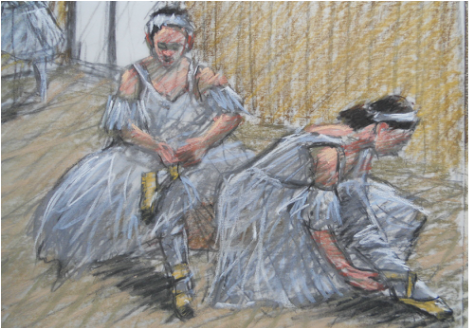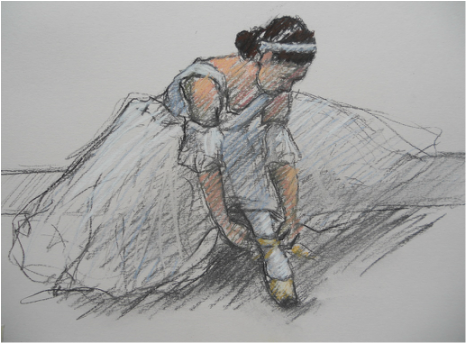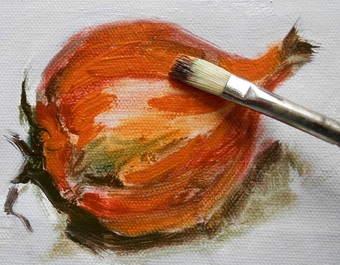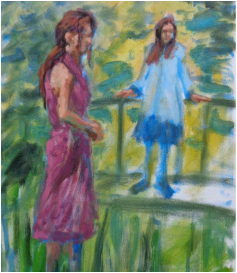4. Use unusual formats to inspire composition. Looking closely at many of Degas’ pastel paintings you can see where he has added strip of paper to alter his format from a rectangle to a square. There are also a number of long narrow canvases - almost ‘double squares’. In each of these less common formats both the abstract arrangement within the frame and the way spaces need to be used imaginatively result in much more dynamic and exciting compositions than are often made using a simple rectangle.
5. Draw what you want others to see. Not what you see, but what you would like to show others, is what Degas advocated when drawing from observation. The difference lies in how you select what to include and what to leave out, as well as in what you choose to emphasise.
6. Limit colours. Degas' use of colour was often spectacular - yet this could be achieved with a limited palette - meaning fewer colours are involved in the colours scheme, eg. blues and yellows, plus the various related greys and neutrals made from these two main colours. A more intense colour effect can be created by restricting the palette in this way.
PASTEL WORKSHOPS 28TH MARCH/25TH APRIL/23RD MAY - see the website for further details of these Saturday sessions which will explore Degas use of chalk pastels in capturing the clothed human figure.
5. Draw what you want others to see. Not what you see, but what you would like to show others, is what Degas advocated when drawing from observation. The difference lies in how you select what to include and what to leave out, as well as in what you choose to emphasise.
6. Limit colours. Degas' use of colour was often spectacular - yet this could be achieved with a limited palette - meaning fewer colours are involved in the colours scheme, eg. blues and yellows, plus the various related greys and neutrals made from these two main colours. A more intense colour effect can be created by restricting the palette in this way.
PASTEL WORKSHOPS 28TH MARCH/25TH APRIL/23RD MAY - see the website for further details of these Saturday sessions which will explore Degas use of chalk pastels in capturing the clothed human figure.




 RSS Feed
RSS Feed